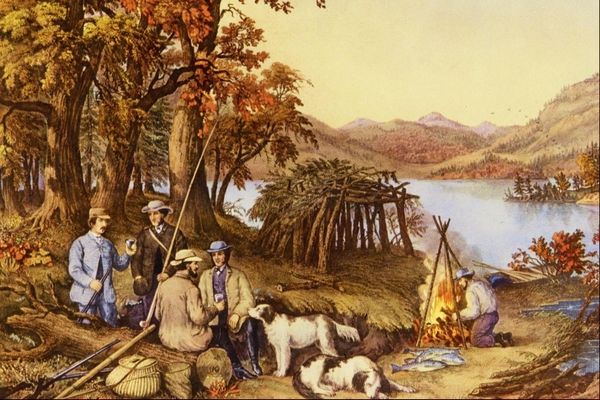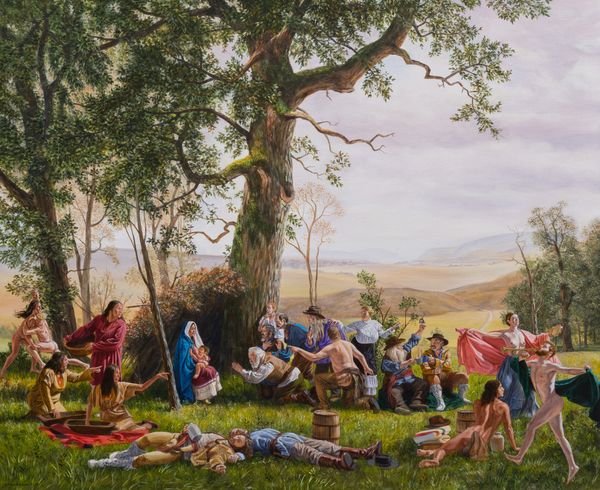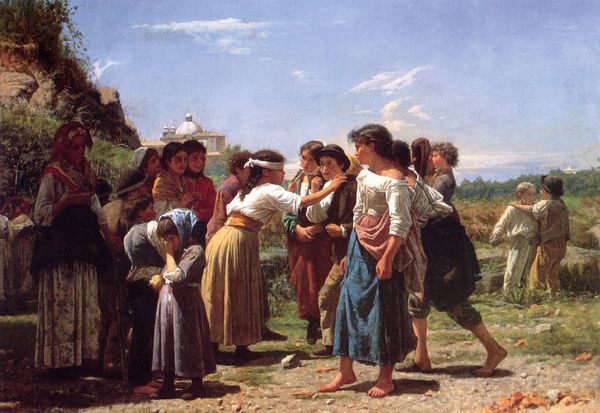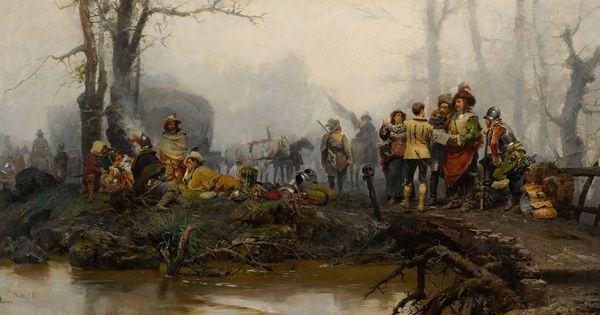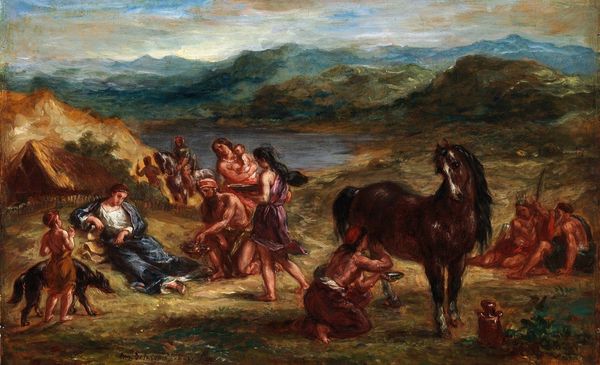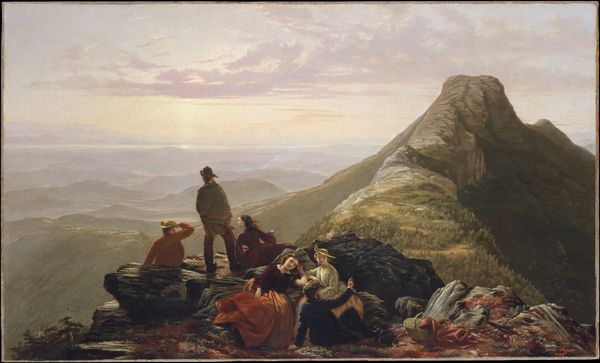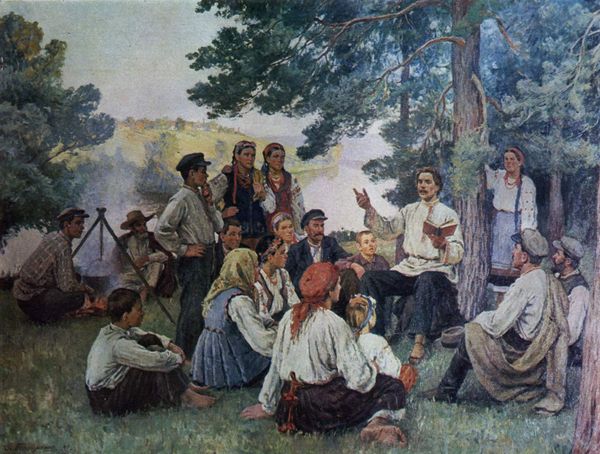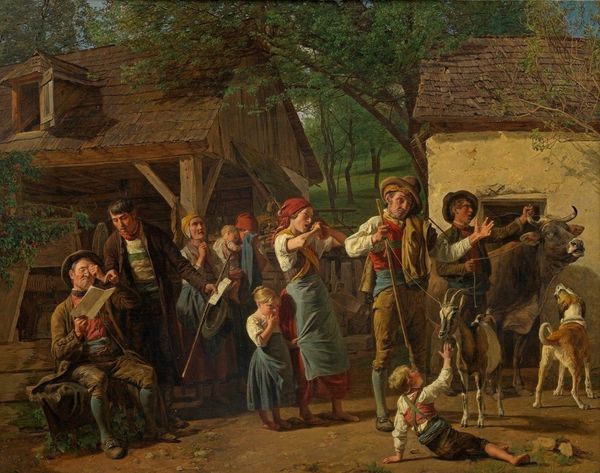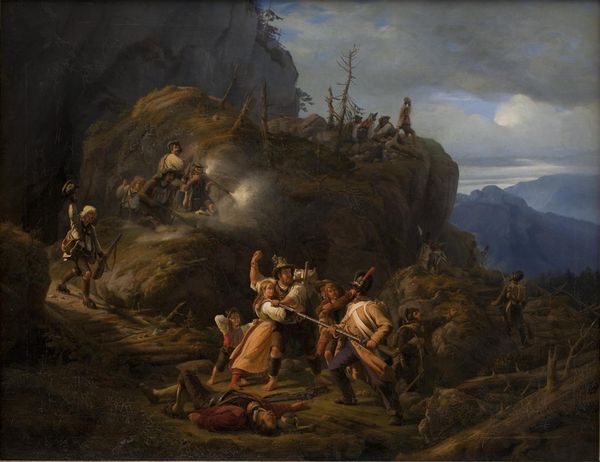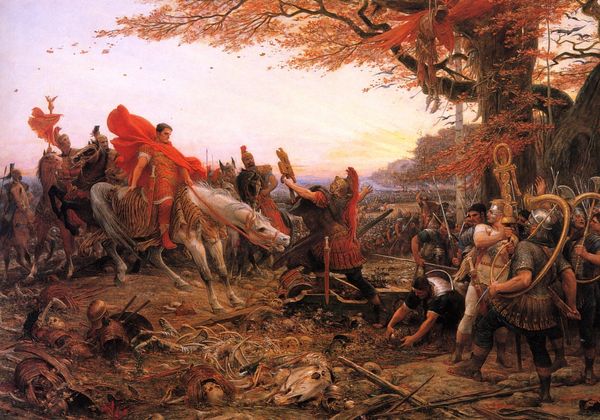
Copyright: Public domain
Curator: Oh, I’m immediately struck by the air of exhaustion here, but a really peaceful, earned sort of tiredness, like they are happily weary, almost celebratory, it's quite radiant despite its stillness. What are we looking at? Editor: This is "The Pilgrims Resting" painted by Ferdinand Georg Waldmüller in 1859. The medium is oil paint, a choice typical of the time, perfectly capturing that light, and currently it resides in a private collection, a silent witness to our modern gaze. Curator: “Pilgrims resting,” you say, yet, it reads more like a genre painting to me. It’s so incredibly realistic, which throws me a bit. They appear almost modern, their clothes, their postures...it seems to go beyond a religious reading. Editor: Well, you're onto something; Waldmüller was a master of genre painting. He portrayed everyday life with a realism that was quite radical for his time, moving from the strictly academic romanticism to infuse social commentary into idealized scenes. That could explain the painting’s pull. Curator: Yes! A romantic take on realism, which then lends itself beautifully to romanticism! Did this artist set out to capture everyday existence? Because you know what, everyone is doing something; it is a party with a hint of melancholy. It doesn’t shy away from capturing reality or at least some part of it. Editor: Waldmüller did have social reformist leanings, absolutely. Consider the historical context of 1859. It's an era of growing industrialization, the rise of the middle class, and rural populations experiencing pressure and change. Images like these reflect an idyllic vision of a vanishing way of life. Think nostalgia, but with awareness. Curator: The light plays such a big part here. The crisp focus on these faces almost feels staged, contrasted with this misty background…it is a dreamy stage on which very human stories play. It also adds something ethereal to it, so dreamy and nostalgic. Editor: The public perception was and remains shaped by many factors: art criticism, academic norms, socio-political contexts all play roles in who gets remembered. The work is appreciated for its mastery but, viewed through the prism of institutional history, it's a vital artifact. Curator: That’s what gives the work its long lasting pull, that beautiful interplay of life's big questions that get at both, nostalgia and innovation! Thank you! Editor: Indeed. An invitation to consider how public and private lives intertwined in the making of art.
Comments
No comments
Be the first to comment and join the conversation on the ultimate creative platform.
